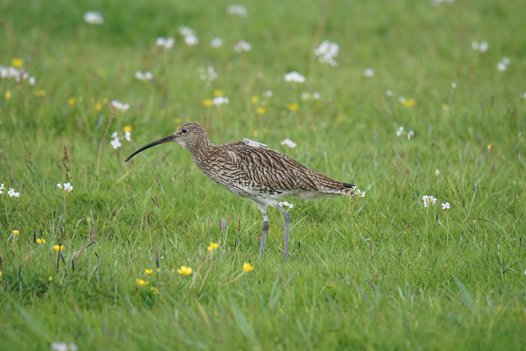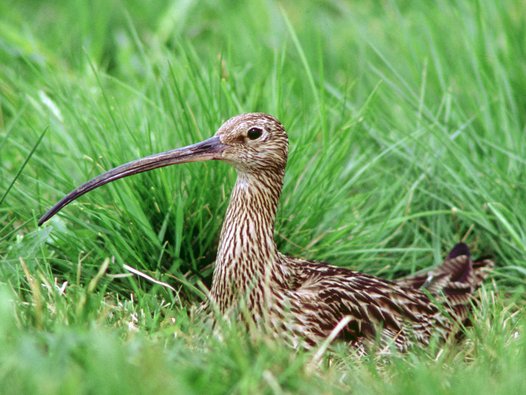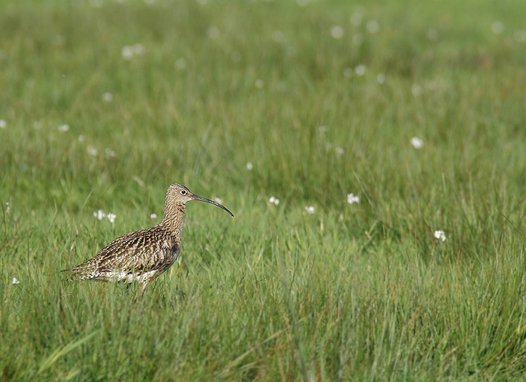Meadow birds
Eurasian Curlew
Meadow melancholy
The Eurasian Curlew is one of the largest meadow birds. Distinctive features are its territory-marking soaring flight, its melancholic song and its long, downward-curving beak. Curlews are predominantly diurnal.
They acquire their food with their pincer-like beak in the vegetation, on the ground and by probing the soil. Their diet ranges from earthworms, insects and small snails to berries and other plant parts. During the breeding season, the pairs defend their territories against intruders. Outside of the breeding season, Curlews are social and form communal roosts in shallow waters.
Profile
| Scientific name | Numenius arquata |
| Call | Tweerr … tweerr … tweerr |
| Food | Small invertebrates, sometimes fruits and seeds |
| In breeding grounds | March to July |
| Clutch size | 3–4 |
| Broods per year | 1 |
| Population trend in Europe | Declining |
More information
Find out more about the Eurasian Curlew.


